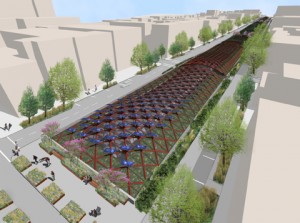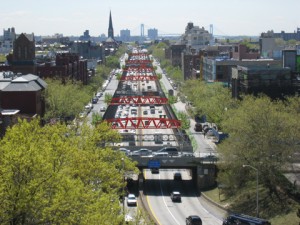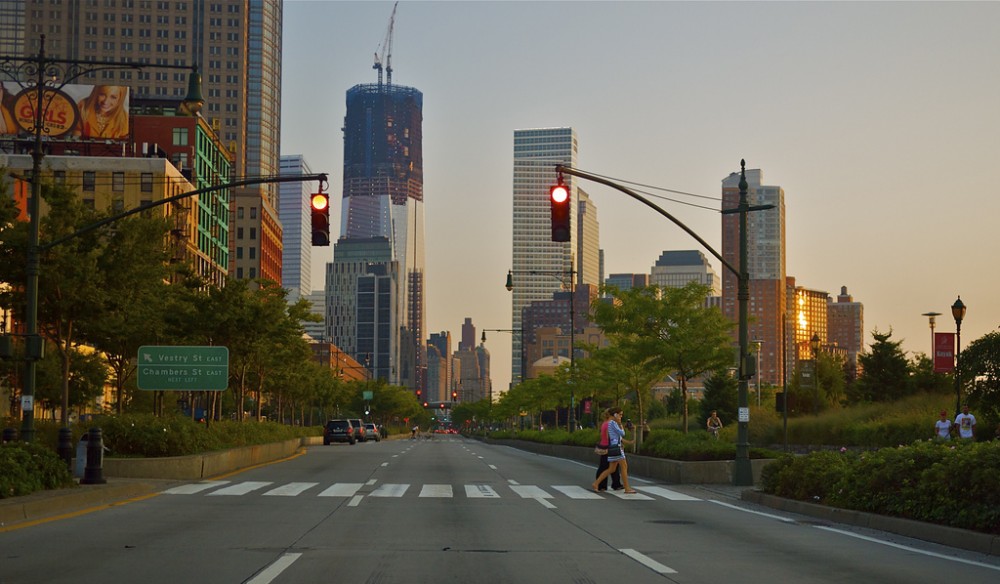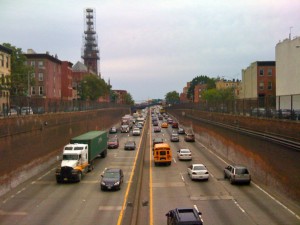In the 1950s, the construction of elevated and sunken highways marred many cities in the name of progress and the almighty automobile. The Brooklyn Queens Expressway in New York City is a great example. The picture on the right shows a portion of it in a trench and it is an eyesore that splits a neighborhood in half. But what if we could bring the community back together by incorporating a design that would cover it and provide additional green spaces while also enhancing the bicycle and pedestrian environment?
Some options were unveiled by artists that really should be considered by the NYSDOT to bring a community back together. Some of those options are shown below. Cities across the country should incorporate these designs for redeveloping areas that were mauled during the construction of these expressways.

Artist rendition of creating a trellis Structure over the trenched rows which includes Photo-voltaic panels that generate revenue for the City. Photo-voltaic array could earn the city $USD312,500 per year through energy generation.

Artist rendition of maximum green. It creates a green streetscape with traffic calming, tree plantings, water sensitive design with the option for green screens/artistic fences.

Artist rendition of creating “green machine” bridges equipped with greenscreen or acoustic panels, PV, and decorative lighting, with the option of adding treatments from the ‘Maximum Green’ concept.


The problem with these ideas is that most of the benefit won’t be taxable. The would greatly improve the quality of life in these areas and also probably lead to increase economic performance and property values. However it is unlikely that the increased revenue will actually pay for the project. It is an unfortunate fact that the quality of life of poorer people, who live in the areas where most of these highways were built, is less taxable than the quality of life of richer people. I find it unlikely that any city will agree to pay for such a project unless they can see it at least breaking even at some point, which is also unlikely.
I disagree with your point. Our government is not looking for just what tax revenue they would receive when planning a project. There are many projects that our government has undertaken where no tax revenue was received back such as the Big Dig Project in Boston. That was an extreme highway beautification project that rectified the I-93 expressway that went straight through the heart of Boston. The West Side Highway was another highway beautification project that did not give tax revenue. Please check out my blog post on the latter point for additional information.
Tax revenue is not the only incentive to implement such projects. There are others that value societal and environmental incentives. The project proposed along this section of the BQE would decrease runoff into sewer lines, decrease noise and increase the value of properties. Tax revenue may drive the fruition of projects faster, but there are many other reasons for our government to fund a project.
This is a great way to fill in a gap that is caused by expressways in NYC. New York is already short in space so it would be a good idea to have something over sunken highways. Underground transportation in nothing new, as underground trains (such as subways) have been around for more than 100 years. Eventually, it would be practical to have all modes of ground transportation underground in urban areas.